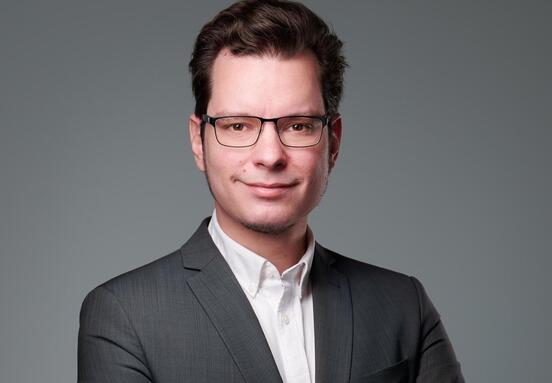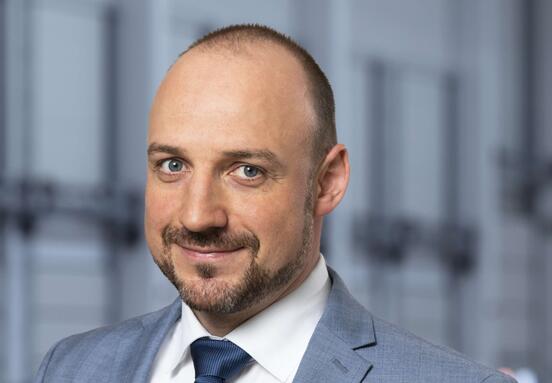It seems like the market really appreciates the boldness of speculative developers. According to recent news, your newly built warehouse complex at Szigetszentmiklos has been sold out with unprecedented haste.
Our investment is not really about boldness. We approach speculative developments selectively. We made a well-informed but undeniably optimistic decision. We base on our in-house reports on the trends in each segments of the market and deliver our speculative development projects in locations where the vacancy rate is dropping, the demand is growing and all other metrics are favourable. The technical delivery of the 20,000 sqm building has already been completed and our first customer has already moved in to the 5,000 sqm unit. I expect that by Q4 we will have the whole building fully leased.
The foundation stone was laid in April and by the end of September the building is already finished. Did you have to sacrifice quality to get the building ready so quickly?
During the years of recession we took all our projects to the point where we already had the construction permits. We deliver buildings based on Prologis high quality standards. If we have a potential customer at our doorstep and they do not request any changes in the plans, we can start the constructions works right away. The five-month-long implementation period is tight but feasible.
Does that mean that you are not affected by the blue-collar worker shortage in Hungary?
Not directly, but our customers show signs that certain positions are becoming harder to fill. We also see that in the construction industry it is becoming more and more difficult to find subcontractors that have capacity for the pipeline of projects in Hungary. We have multiple partners that often have to bring in workforce from more than 50 km each and every day.
How much does the property tax levied by the municipalities affect your decision on choosing the next location?
The most important factor in real estate development is the location. Our total costs and profitability, however, are affected by the local property tax. We sign triple net lease agreements with our partners, i.e. they pay their rent, service charges and other operating costs. Property taxes are paid as part of the service charges, it is an item in our partners’ budget and they can compare locations based on property tax rates. Some municipalities around Budapest recognised the fact that raising property taxes is not advisable – even during recession years –, because they keep new investors away.
What do new tenants base their decisions on regarding distribution centres?
Customers usually take their own operations as a priority when it comes to choosing a location. They consider their shipping locations, their agreed delivery times to these locations and also check whether the appropriate workforce could be hired locally. The M0 ring road is still the most popular location, but there are some discrepancies there too: Szigetszentmiklos is still very attractive to customers and the Gyal area is also showing an increase in demand. The initial part of M1, i.e. Biatorbagy, Herceghalom and Paty also boast with high occupancy rates. However, the demand has not been similarly growing for the eastern section of M0 and for the area around the airport. I can still see new growth opportunities in the region, even though in Hungary the dominance of road transportation is not going to fade and the rate of air freight forwarding is not expected to grow significantly in the near future.
Where will the next Prologis site be located?
Our strategy is to be in the well-established core markets which never disappoint us – locations that performed well even during the difficult years of the most recent global economic downturn. Recently the dominant trend is pointing towards the southern and western sections of M0 but currently a significant part of our capacity is utilized to keep up the high standard of service to our growing customers, who constantly demand more and more space for their operations.
What are the operative areas of your quickest growing partners?
Suppliers to the automotive industry and related logistics services are growing strongly, together with the electronics industry. E-commerce companies do not constitute a significant part volume-wise but the space they rent from us doubled in size quite quickly and I can see a huge growth potential in this industry. The Czech Republic is about 1,5-2 years ahead of Hungary and a significant percentage of their warehouse capacity is occupied by online retailers that serve the Western European markets. To give you an example, in my opinion Austria could be serviced from Hungary too, since our operating costs are lower than in those countries west of Hungary. This and the growing investment interest are both signs of growing prosperity in the warehouse renting market.
Is this the result of Hungary’s rating having been raised in September?
It definitely helped but the rise of rental costs, the drop in vacancy rates and yields all show that the Hungarian market is exactly where the Czech market was just 1,5 years ago, i.e. it is on the rise.
What is your tenants’ opinion about the rising rental costs?
Our experience is that our new partners as well as those long-term ones whose contract is to be renewed accept the change. After 7 lean years, now the supply-demand situation is in our favour.
Since 2008 you are the first on the Hungarian market to launch a speculative development project. Do you sleep well at night or does the weight of your decisions trouble you?
The company growth belongs to my responsibility as a country manager. I always pay extra attention to the performance of the company but I’m not stressed too much. I counterbalance stress with sports: I do tennis and kick the ball with my childhood friends. I have two kids who need a completely different kind of attention than that I pay to my colleagues or the ongoing projects and I spend as much time as I can with them. That is the best leisure time I can imagine.
Raktarkereso.info








